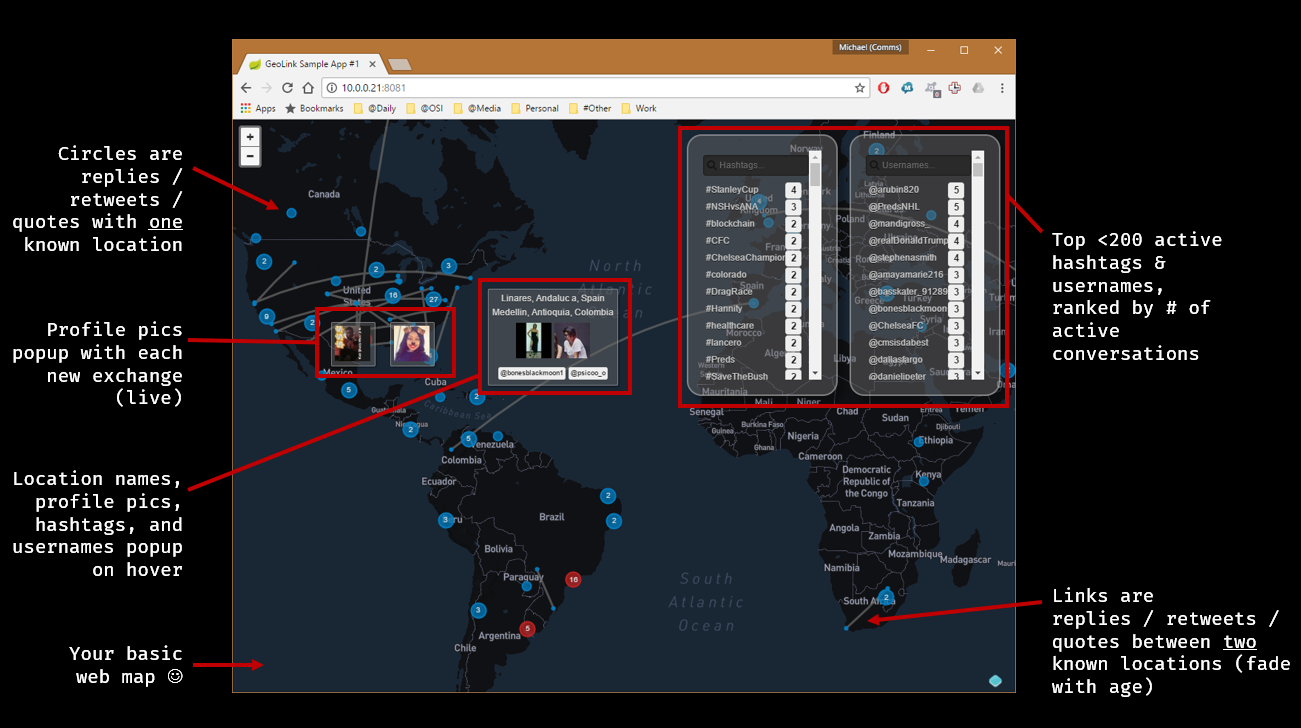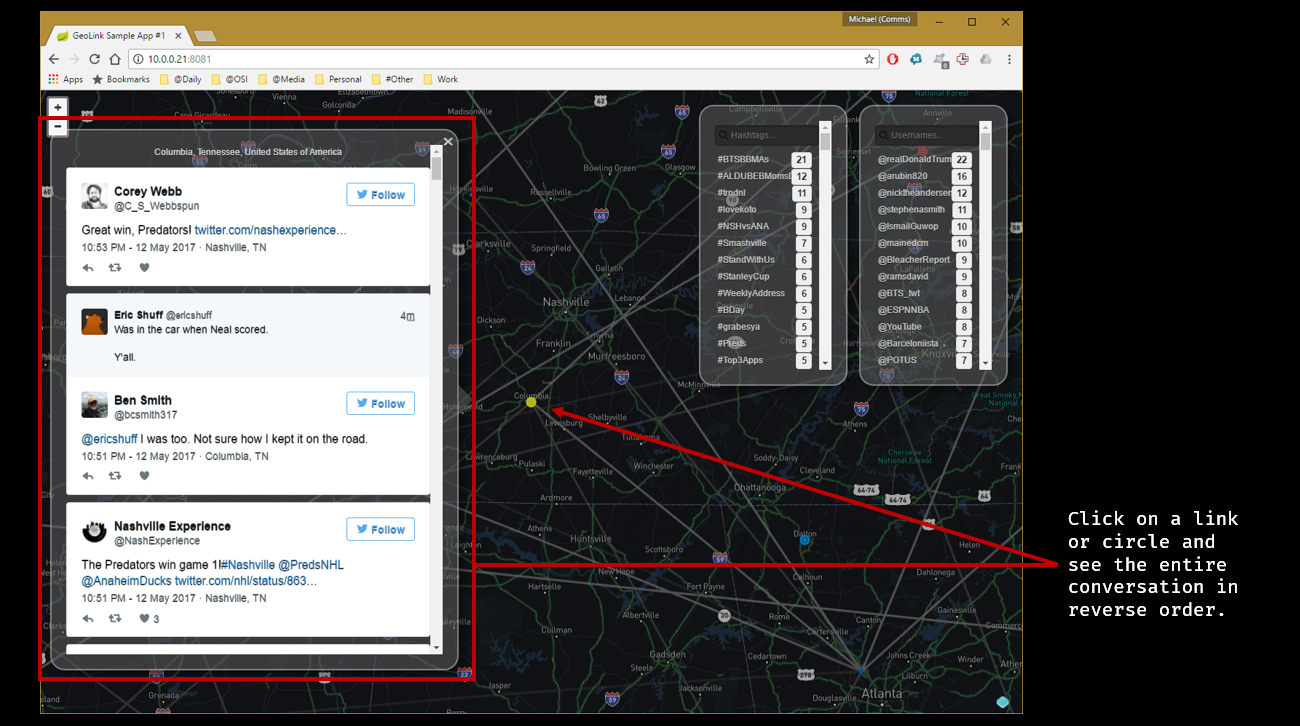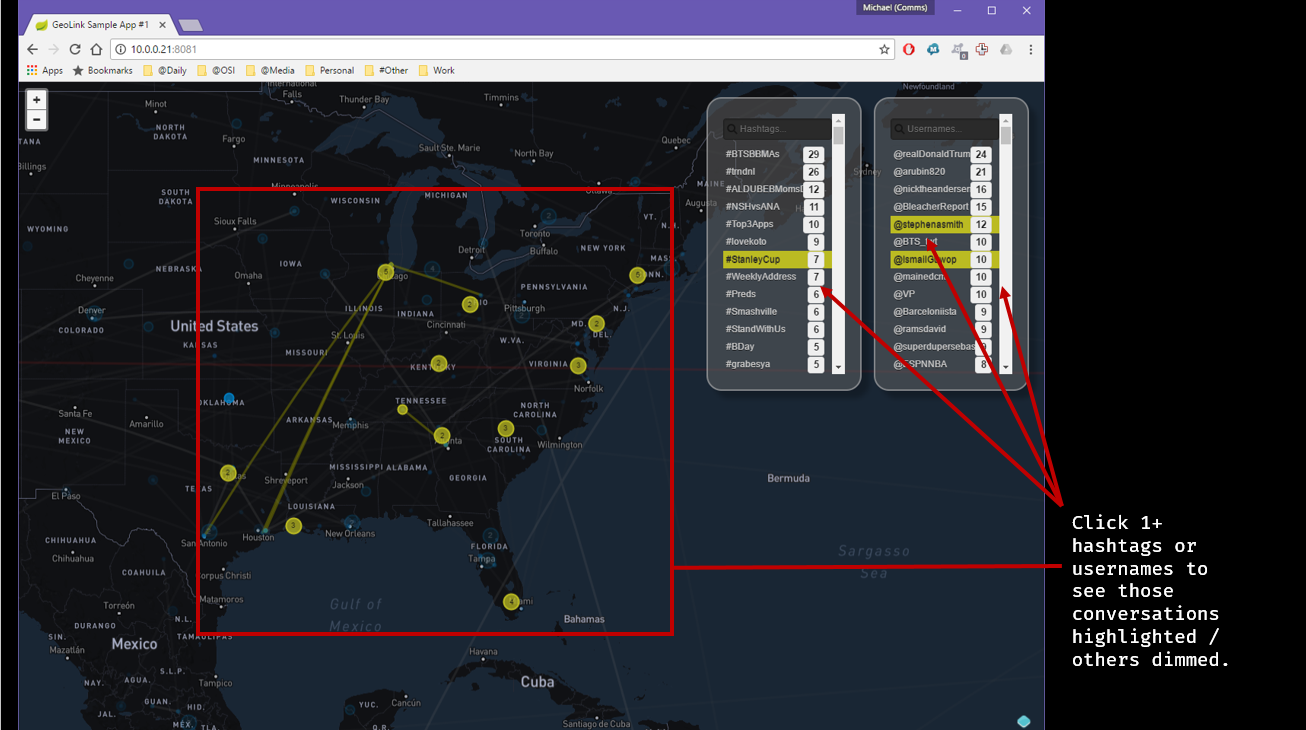Twitter conversation scanning and mapping tool, made with SpringBoot, Kotlin, OpenLayers3 and jQuery Mobile.
Uses websockets for continuous, low-overhead updates and geospatial bucketing for (somewhat) decluttered presentation.
This is POC-level code (comments/tests are on the to-do list).
Main UI on a typical Sunday morning:
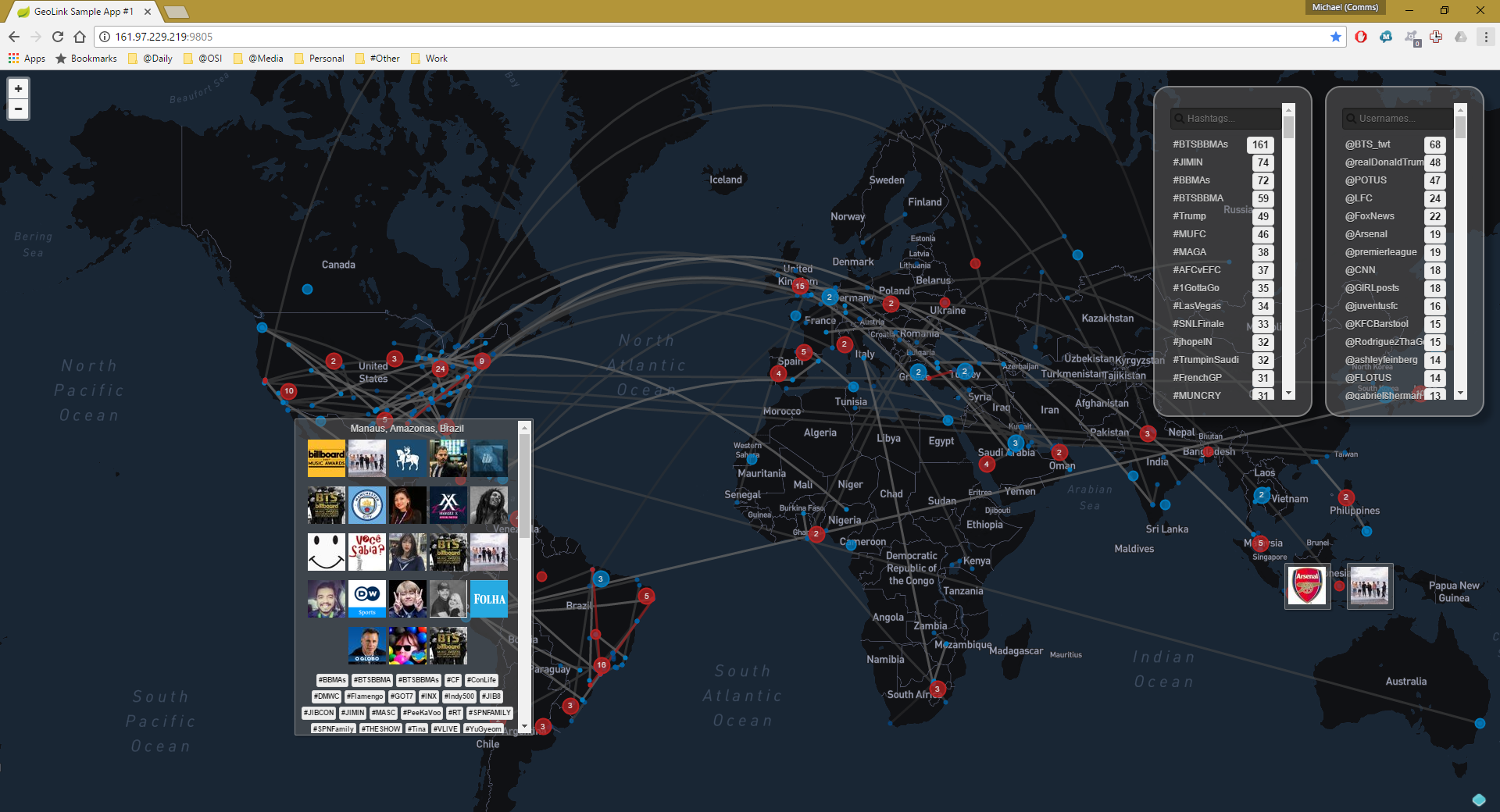
New-ish Linux, Windows, or Mac OS.
Download/install Apache Maven.
Ensure both are in your working path.
You'll need to create a Twitter app (quick/free), then get app and user keys/secrets in order to build or run the software.
Twitter app management page with the important parts highlighted:
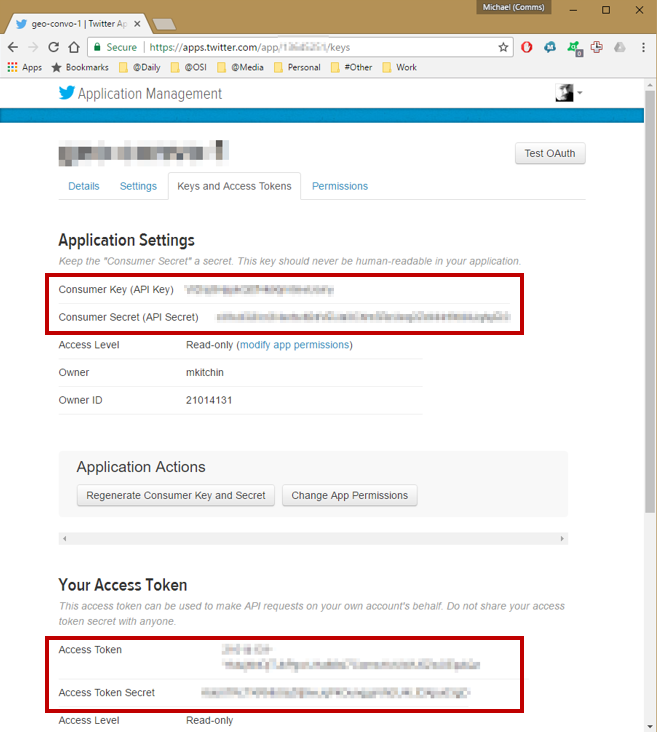
You'll need to create a Mapbox account (quick/free), then get a public token to run the software.
Mapbox account management page with the important parts highlighted:
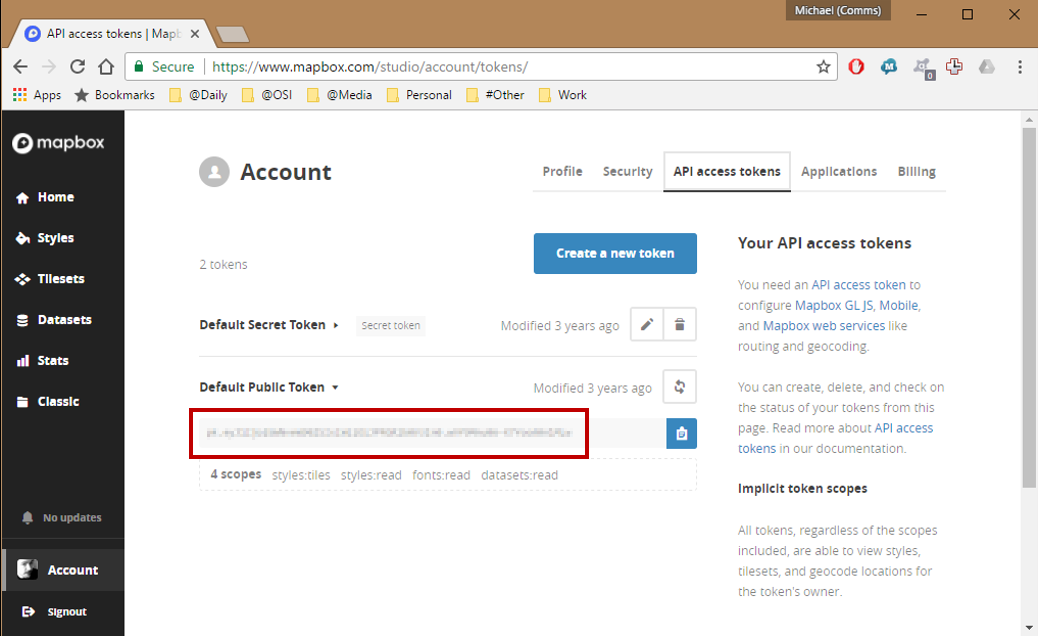
Fill out Twitter keys/secrets obtained above, per instructions at top of file.
Fill out Mapbox token obtained above, per instructions at top of file.
In bash/cmd:
$ cd <path-to-source-folder>
$ mvn clean packageYou may build with tests disabled if you'd rather not embed Twitter keys/secrets, as follows:
$ cd <path-to-source-folder>
$ mvn clean package -DskipTestsThis generates a JAR file of the following form:
target/geo-convo-server-<version>-<snapshot-or-release>.jarE.g. (used in examples below):
target/geo-convo-server-0.0.1-SNAPSHOT.jar- Copy generated JAR file to wherever it's to be deployed.
- Copy
datafolder to to the same location. - (Optionally) Copy
application.yml, referenced above to the same location to override embedded settings (e.g., Twitter keys/secrets).
In bash/cmd:
$ cd <path-to-run-folder>
$ java -jar geo-convo-server-0.0.1-SNAPSHOT.jarIt's fine to run from the source folder, as follows:
$ cd <path-to-source-folder>
$ java -jar target/geo-convo-server-0.0.1-SNAPSHOT.jarNavigate to the following URL:
http://localhost:8080If all tokens/secrets have been set correctly, the map will be visible and conversations will begin to appear within a minute (expect >60/min, bandwidth depending).
Metrics (e.g., total received Tweets) in JSON form may be obtained via the following URL:
http://localhost:8080/metricsUsername/password are specified in the application.yml file, referenced above.
Example:
{
"mem": 1499474,
"mem.free": 678824,
"processors": 12,
"instance.uptime": 771214,
// [...]
"counter.services.publisher.points.published": 1654,
"counter.services.links.tweets.new": 37434,
"counter.services.status.request.enqueued": 9255,
"counter.services.location.features.known": 1243,
"counter.services.links.tweets.replies": 5605,
"counter.services.trends.requests.trends": 77,
"counter.services.links.tweets.source.location.known": 36604,
"counter.services.links.tweets.target.location.unknown": 1014,
"counter.services.locations.total.known": 12619,
"counter.services.twitter.limit.waits": 1,
"counter.services.status.request.loaded": 873,
"counter.services.appcontroller.requests.startup": 2,
"counter.services.links.tweets.source.location.unknown": 830,
"counter.services.publisher.messages.published": 486,
"counter.services.links.tweets.duplicate": 435,
"counter.services.status.request.cached": 9731,
"counter.services.links.total.known": 58,
"counter.services.links.tweets.target.location.known": 336,
"counter.services.publisher.ends.published": 200,
"counter.services.publisher.links.published": 100,
"counter.services.links.tweets.chained": 14,
"counter.services.links.tweets.quotes.1": 4126,
"counter.services.links.total.unknown": 374,
"counter.services.trends.requests.places": 2
}In an effort to collate Tweets to/from approximate locations I used the Natural Earth Populated Places dataset and qGIS to generate the following Voronoi (Thiessen) polygons:
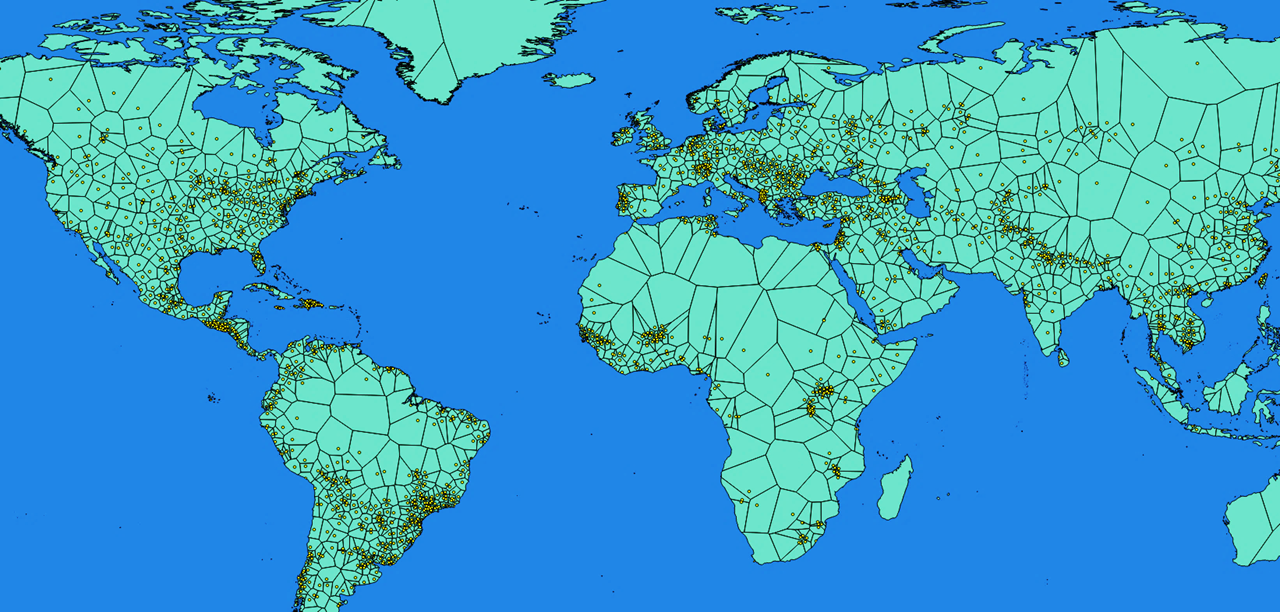
This represents ~2000 cities from the original dataset, selected by SCALERANK and RANK_MIN (population) values.
The LocationsService in the software matches Tweet locations against these polygons, then groups matched Tweets at the latitude/longitude of the related city.
These polygons are stored in a shapefile referenced in the application.yml file and may be modified to provide differently-distributed circles and link endpoints.
